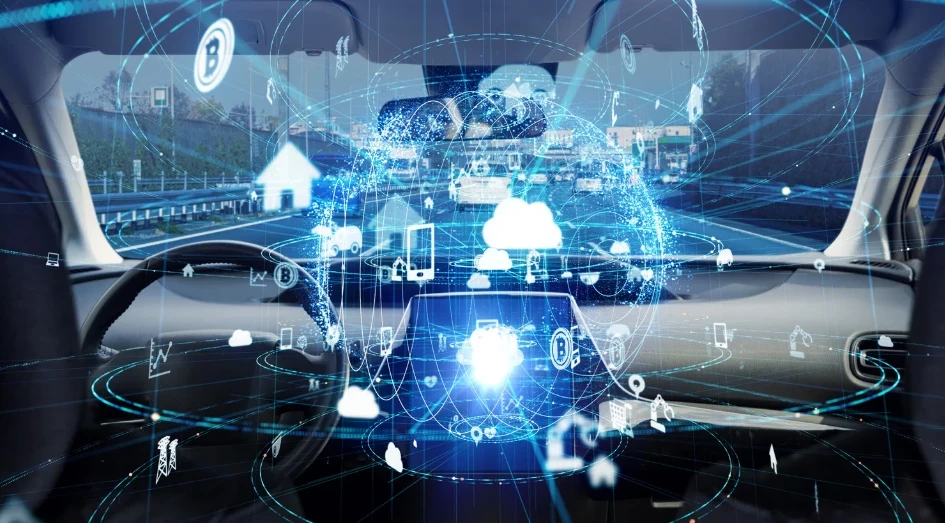Who Owns the Customer? Critical Issues for Automotive App Development
Add bookmark"Automotive apps are pushed by smart phone apps. How can we get the needs of all players, safety and user expectations into one overall concept?"
Automotive IQ asked Dr.-Ing Peter Roessger about app development and app integration in future vehicles. Another issue addressed is the difficulty of creating revenue through apps.
Who Owns the Customer? App Development Full PDF
The integration of mobile devices within vehicles increases comfort, functionality and usability for the driver and pushes the merging of automotive and consumer electronics. Which developments and solutions for driving related application and cloud based apps have the most potential from your point of view?
Peter Rֈger: Well, if comfort and usability are raised by automotive apps is a question that needs a serious discussion and carefully selected solutions. But the functions available in a vehicle will definitely grow rapidly once a common concept for development, distribution and use of automotive apps is found. Automotive apps can be divided into three groups: vehicle related, travel related and driver related. Vehicle related apps may grow the efficiency of a car, reduce fuel consumption, increase safety or collect vehicle data for the OEM. They will come up as "embedded" apps without too much of an HMI. Some of those will come up quickly, but I expect an overall slower way into daily driving. Travel-related apps like traffic information, traffic data collection and distribution or traffic light optimization will pop short term or are already available in some devices. Driver related apps will cover all media and infotainment functions. These are more or less available, at least in their basic functions. Cloud access or integration of large storages will change these apps only slightly. Driver related communication apps like Twitter or Facebook will have a hard way into dashboards, since their use is totally distraction and safety critical.
Electronic companies make mobile devices faster and nimbler by imposing significant updates almost every year while there are no common business models to earn money with automotive app. What are the requirements for an automotive app store and how can potential revenue concepts with value-driven applications look like?
Peter Rֈger: The main question here is, like it was in the good old days of automotive telematics, who owns the customer? Is it the automotive OEM? The device manufacturer? The app programmer? The network provider? Each of these players has different ways of gaining revenue. And each wants to make money! On the other hand it will be difficult to gain any revenue with apps at all. Users are "spoiled" by the free or very cheap apps they can download to their smart phones. If the model of smart phone apps is transferred to automotive apps the device manufacturers will not gain too much out of apps directly. Providing hardware to make apps run is an indirect revenue stream. Network providers will make their piece by transferring data. And the app programmers are either paid by the user (buying the app) or the advertisements running in the app (free apps). The automotive OEMs are not part of this picture, but need to provide space on the dashboards, access to vehicle data and to their customers. So the essential player in that game sees no money. The way out for the OEMs will be to program the apps themselves. This will have the additional advantage that they can care about safety aspects of any kind. But since car companies are not app programmers, these apps will be awfully expensive for the final user. So these open issues should be clarified, before app store concepts may be derived from that!
Which innovative concepts do automobile manufacturers have to develop for app integration, how can intuitive operation improve driver safety and which HMI concepts are suitable for that?
Peter Rֈger: The strong point of an embedded or vehicle integrated system running the apps (as opposed to smart phones in a charging cradle) is the high level of integration into the vehicle infrastructure. This opens the opportunity to apply multimodal interfaces (speech AND gesture AND touch screen AND steering wheel controls AND ...). Some OEMs show with their infotainment HMIs how a well-designed on-the-road solution may look like. Simplified interaction designs, appropriate screen designs, multi modal interaction and reduction of functionality are core for a safe HMI solution.
How does your company try to implement automotive app integration and how can HMI concepts ensure usability and improve user experience?
Peter Rֈger: The HMI team of TES consists of HMI designers and psychologists with long term experience in the automotive HMI industry. With an HMI driven development process and frequent usability tests in all phases of the development we can ensure that all aspects of user experience, usability and safety are considered. User experience is not only driven by the core interaction between user and system but by all steps in the life cycle of the system. This includes brand recognition, pre sales support, purchasing procedure of the device, buying the app, support during life time, and end of life support. TES provides solutions for all steps of that process.
How do you evaluate the outlook and expectations concerning effective app development for the automotive environment and the integration of mobile devices’ applications to support the driver and satisfy the demand to be always connected?
Peter Rֈger: Wow, 10 questions in one question! The outlook of automotive apps is totally unclear. See my answer on the business models! The user expectations are totally high, driven by the apps for smart phones. You can get complete office packages for free, just like navigation apps, adult stuff, news, TV programs, etc. etc. etc. Driver safety and driver satisfaction do not run in parallel, but they are very often totally opposite. Drivers expect high functionality and low process; safety requires low functionality and adapted HMIs.
Dr.-Ing Peter Roessger is Business Development Director Human Machine Interfaces at TES Electronic Solutions

































